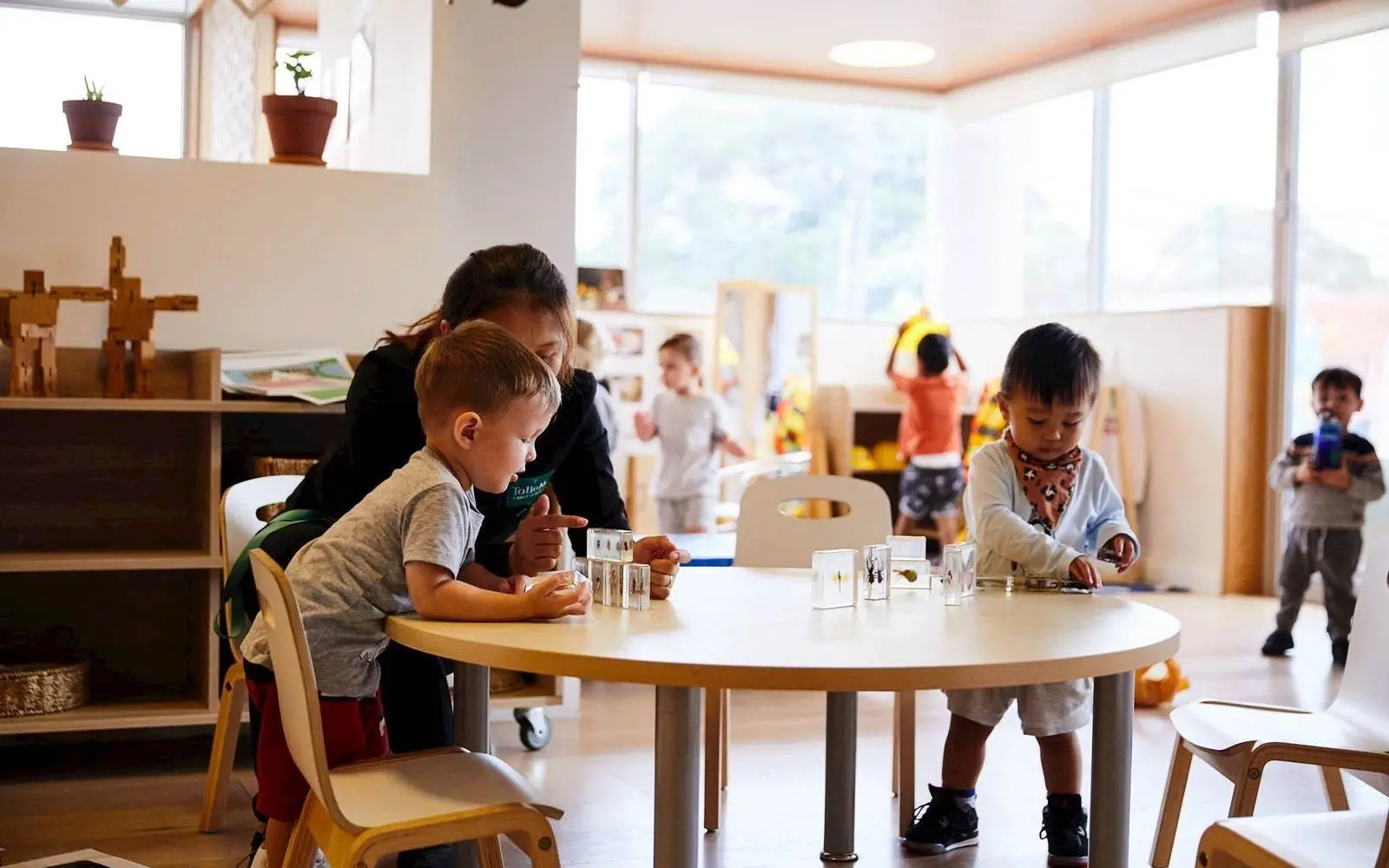
Leaving your child at a childcare centre for the first time can be an emotional rollercoaster. It’s a milestone filled with excitement as your little one takes steps toward independence, but it’s also natural to wonder, “Will my child be safe?”
The good news is that Australia enforces some of the toughest childcare safety standards globally. However, safety isn’t just about following regulations or completing checklists. It’s about creating a nurturing environment where children feel secure, supported, and free to explore.
This guide aims to provide you with the knowledge and tools to assess the safety of your chosen childcare service confidently.
What Defines a Safe Childcare Environment?
Safety in childcare goes beyond secure gates and tidy play areas. It encompasses physical, emotional, and social well-being. Under the guidance of the National Quality Standard (NQS) and the Australian Children’s Education & Care Quality Authority (ACECQA), childcare centres follow strict protocols to ensure child safety.
Key elements of safety include:
- Qualified Staff: All personnel must clear a Working With Children Check (WWCC) and undergo training in first aid, emergency response, and child protection.
- Clean, Supervised Spaces: Child-friendly areas that are hazard-free, with clear sight ines to supervise activities.
- Child Protection Policies: Guidelines to identify, respond to, and prevent harm or abuse.
- Open Dialogue: A culture of transparency where parents and children feel comfortable voicing their concerns or feedback.
Ultimately, safety is also about fostering a welcoming atmosphere. Your child should feel happy and valued in their care environment.
Evaluating Childcare Safety Like a Pro
1. Assess the Physical Environment
When visiting a childcare facility, take note of how the space looks and feels. Does it feel secure and organised? Use your senses to evaluate if the environment is clean, safe, and engaging for children.
Pro Tip: Consider using a checklist tailored for assessing childcare environments, focusing on everything from outdoor play areas to hygiene practices.
2. Cultivate Relationships with Educators
The staff at the centre will play a big role in shaping your child’s early experiences.
- Talk regularly with educators about your child’s experiences and any concerns you might have.
- Notice if the staff speaks warmly to children, knows them by name, and takes an interest in their needs.
Building strong relationships with educators can lead to more open communication and smoother resolution of any issues.
3. Understand the Standards
Childcare services are required to meet certain benchmarks under NQS Quality Area 2, which addresses health and safety. Familiarise yourself with these standards to ensure your childcare provider is compliant.
A few key guidelines include:
- Minimising risks, such as ensuring secure building entry and safe outdoor equipment.
- Listening to children and creating an inclusive environment where families feel involved.
- Adhering to mandatory reporting laws when there are suspicions of harm.
Remember to research specific safety regulations in your state to see if there are additional precautionary measures.
How You Can Contribute to Child Safety
While childcare centres bear significant responsibility, parents also play a pivotal role in maintaining a safe childcare environment. You can take the following steps:
1. Stay Actively Engaged
- Take part in parent-teacher meetings or open days to stay informed about operational practices.
- Ask relevant questions, such as how the centre handles illness outbreaks or what emergency training staff receives.
2. Observe Your Child’s Behaviour
Your child’s behaviour can be a powerful indicator of how they feel about their childcare experience.
- Monitor changes in mood or behavior after attending the centre.
- Have age-appropriate discussions about their day. Questions like, “What was the best and worst part of your day?” can give you insight into their feelings.
3. Speak Up When Needed
If something doesn’t feel right, don’t hesitate to address your concerns with the centre’s leadership team. Serious safety issues should be reported to the appropriate child protection authorities.
4. Be Part of the Process
Join parent councils, help strategise safety policies, or volunteer during events. Your involvement fosters a sense of trust and ensures a safer, more inclusive environment for all children.
Practical Safety Features to Check For
When evaluating a childcare facility, look for these clear indicators of safety protocols in action:
- Secured entry systems, such as coded doors, to prevent unauthorised access.
- Regular inspection of equipment and play areas to eliminate hazards.
- Policies that address food allergies, creating safe meal environments.
- Clear emergency evacuation plans that are practiced frequently and visibly displayed.
- A collaborative relationship between staff and families, encouraging feedback and input.
The Bigger Picture
Selecting the right childcare centre can be an overwhelming process. However, Australia’s comprehensive safety guidelines ensure that providers are equipped to keep your child safe and happy. When parents, educators, and management work together, childcare safety becomes more than compliance; it becomes a shared culture that prioritises every child’s well-being.
By staying informed, asking thoughtful questions, and taking an active role, you can confidently decide on the best childcare for your little one. And always trust your instincts; if something feels right, it probably is.
Do you have questions about childcare safety? Reach out to your provider or explore resources like ACECQA for more information.